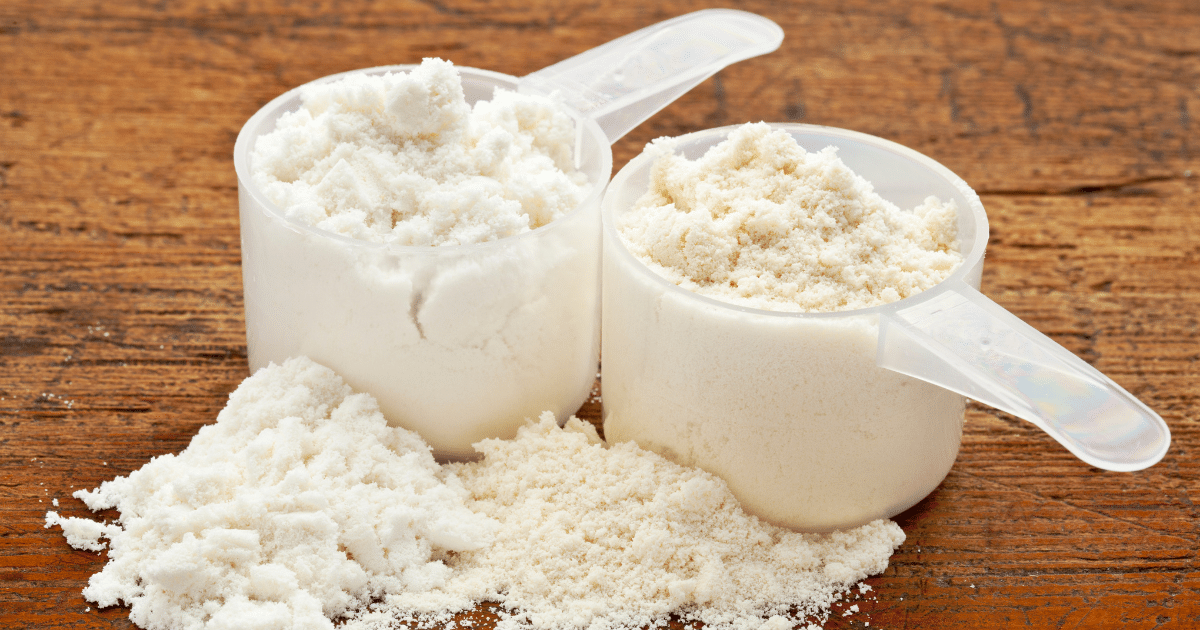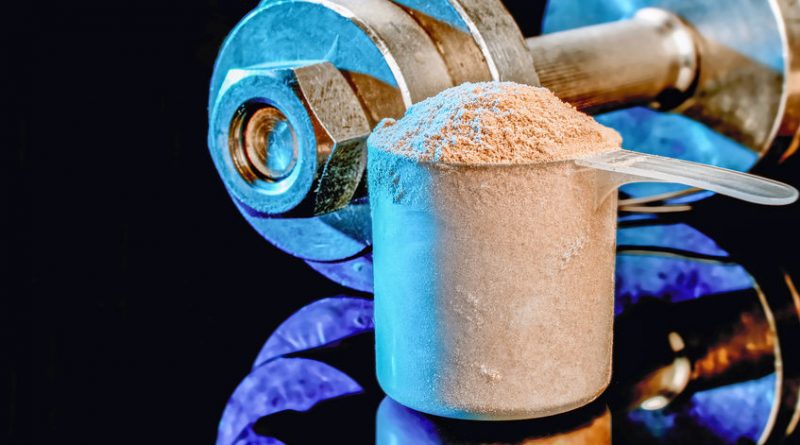9 Unique Ways How to Use Protein Powder
If you’re tired of the same old protein shake, you’ve come to the right place. I’m going to show you unique ways how to use protein powder.
While shakes are convenient, relying on them every day can get seriously boring. Sometimes you just want to chew your food, but you don’t have time to cook a full meal. As a certified sports nutritionist and a self-proclaimed fitness nerd, I’m always looking for creative ways to boost my protein intake. The good news is that your favorite powder is way more versatile than you think.
This guide will show you exactly how to use protein powder in delicious and unexpected ways, turning everyday meals and snacks into high-protein powerhouses.
Disclaimer: This article is for informational purposes only and is not meant to treat or diagnose any condition. It is recommended that you speak with your doctor before starting any exercise program, changing your daily nutrition, or adding any supplements to your regimen.
Table of contents
Key Takeaways
- Beyond the Shake: Protein powder can be easily incorporated into coffee, oatmeal, yogurt, baked goods, and even pancakes to boost your daily protein intake without relying on shakes.
- Choose the Right Powder: The type of protein matters. Whey and casein blends are often best for baking, while whey isolate mixes well into liquids like coffee and casein creates a thick, pudding-like texture.
- Master the Technique: To avoid clumps, especially in hot liquids, mix the powder with a small amount of liquid first to create a paste, or use a blender or milk frother for the smoothest results.
- Don’t Replace Flour 1-to-1: When baking, a good rule of thumb is to replace no more than 1/3 of the flour with protein powder to avoid a dry or rubbery texture.
- Heat Doesn’t Destroy Protein: Cooking with protein powder is safe. The process, called denaturation, changes the protein’s structure (like cooking an egg) but does not reduce its nutritional value.

Check Out These Delicious Ways How to Use Protein Powder
If you want to change up how you use your protein powder and have it be for something other than just protein shakes, check out our list of ways to use protein powder below.
1. Coffee creamer
Forget those sugary store-bought creamers. Adding a scoop of protein powder is one of the smartest ways to upgrade your morning coffee. You not only get a creamy texture and delicious flavor but also a significant protein boost to start your day and keep you full.
My go-to flavors for this are vanilla, chocolate, or even a specialty flavor like Salted Caramel from a brand like Dymatize. You can also use specific amino acid creamers. The key to avoiding clumps is to let your coffee cool slightly first. Another pro tip is to use a handheld milk frother, like the popular Zulay Kitchen frother, to blend the powder in for a perfectly smooth, latte-like texture. This is easily one of my favorite ways of how to use protein powder for a productive, energizing coffee.
2. Baked goods
Adding protein powder is a fantastic way to make your favorite baked goods, like cookies, brownies, and muffins, more nutritionally balanced. However, you can’t just swap it 1-for-1 with flour. Protein powder is much more absorbent and can make your treats dry and rubbery.
A good rule of thumb is to replace about 25-30% of the flour in a recipe with protein powder. For example, if a recipe calls for 1 cup of flour, use 1/4 cup of protein powder and 3/4 cup of flour. Whey/casein blends often work best for baking because they provide a balanced texture. To ensure your baked goods stay moist, you should also add a moisturizing ingredient like pumpkin puree, mashed banana, or Greek yogurt.
3. Cereal
That leftover milk at the bottom of your cereal bowl is a golden opportunity. Turning it into “super milk” by adding protein powder is a simple hack to balance out the carbs from the cereal and keep you satisfied longer.
For the best results, don’t just dump the powder on top. The secret is to mix your milk (or a milk substitute like SILK) and protein powder in a shaker bottle first. This ensures a smooth, clump-free liquid you can pour over your favorite cereal. Try matching flavors for the best taste, like vanilla protein with a cinnamon-flavored cereal.
4. Yogurt
Mixing protein powder into yogurt is an easy way to create a high-protein, creamy snack or breakfast. This is especially effective with Greek yogurt, which is already packed with protein. For instance, a brand like FAGE Total can have around 18 grams of protein per serving. Adding a scoop of powder can easily push that total over 30 grams.
To get started, try mixing a vanilla or strawberry protein powder into plain Greek yogurt. You can also get creative with flavor combinations. Mixing chocolate protein powder with strawberry yogurt creates a delicious chocolate-covered strawberry flavor. This is a perfect way to satisfy a sweet tooth while hitting your protein goals.
5. Hot chocolate
On a chilly day, you can transform a standard hot chocolate into a muscle-supporting treat. Simply add a scoop of chocolate protein powder to your favorite hot cocoa mix. This not only enhances the rich flavor but also improves the nutritional profile significantly.
To avoid a lumpy mess, the key is in the mixing. A great insider tip is to use an electric milk frother. It will whip the powder into the hot liquid, creating a perfectly smooth and creamy consistency every single time. Brands known for their rich chocolate flavor, like Ghost Whey, are excellent for this.
6. Pudding
You can easily upgrade pudding, whether it’s from a pre-packaged cup or made from scratch. Just stir in your favorite protein powder to create a creamy, high-protein dessert. But for a truly next-level experience, you can make your own protein pudding, often called “sludge.”
This is incredibly simple. All you do is put a scoop of protein powder in a bowl and slowly add a small amount of water or milk while stirring continuously. The mixture will thicken into a rich, pudding-like consistency. For the best texture, I highly recommend using a casein protein powder. Casein absorbs more liquid than whey, resulting in a much thicker and creamier final product that feels just like real pudding.

7. Pancakes
Starting your day with protein pancakes is a classic for a reason. While convenient mixes like Kodiak Cakes are popular, you can save money and control the ingredients by making your own. Simply add a scoop of protein powder to your favorite pancake batter.
For flavor, vanilla protein powder is a safe bet as it blends seamlessly with the classic pancake taste. Unflavored protein powder is also a great option if you don’t want to alter the taste at all. Just like with other baked goods, be careful not to let the protein powder dominate the dry ingredients, or you risk ending up with dry, rubbery pancakes.
8. Homemade protein bars
Making your own protein bars at home is easier than you think and much more affordable. Most recipes don’t even require an oven. A simple no-bake bar can be made with four core ingredients: protein powder, oats, honey, and natural peanut butter.
When you make your own, you control the macros and the cost. A homemade bar can cost less than $1.50 per serving, while many popular store-bought bars cost upwards of $2.50 each. The recipe mentioned here creates a bar with roughly 30 grams of protein, making it more of a meal replacement. For a smaller snack, simply cut the bars in half.
9. Oatmeal
Plain oatmeal can be a bit bland, but it’s the perfect canvas for a protein boost. Adding a scoop of protein powder is one of the easiest ways how to use protein powder to transform your breakfast into a complete meal that will keep you full for hours.
Here’s a crucial tip from my years of experience: always stir the protein powder in *after* the oatmeal is cooked. If you add it before microwaving, the heat can cause it to clump and cook unevenly. I prefer using plain quick oats, like those from Quaker, and then mixing in a vanilla, strawberry, or banana flavored powder. For extra flavor and healthy fats, I also add walnuts and a touch of honey.
How to Use Protein Powder FAQs
1. Does heating protein powder destroy it?
No, this is a common myth. Heating protein powder causes a process called denaturation, which is simply a change in the protein’s structure. It’s the same thing that happens when you cook an egg. According to a 2022 article, your body absorbs the same amino acids whether the protein is cooked or not, so its nutritional value remains intact.
2. Can I cook with any type of protein powder?
While you can use most types, the results will vary. Whey protein can sometimes become dry in baked goods, so it’s important to add extra moisture. A whey-casein blend is often considered one of the best options for baking as it provides a more balanced texture. Plant-based powders like pea protein can also work well but may have a slightly earthier taste.
3. What’s the best way to prevent protein powder from clumping?
For hot liquids like coffee or soup, avoid adding the powder directly to boiling liquid. Let it cool slightly, then mix the powder with a small amount of the liquid to form a paste before stirring it into the rest. For the absolute best results, a small blender or a handheld milk frother works wonders to create a perfectly smooth blend.


*Disclosure: This article may contain affiliate links or ads, which means we earn a small commission at no extra cost to you if you make a purchase through these links. These commissions help support the operation and maintenance of our website, allowing us to continue producing free valuable content. Your support is genuinely appreciated, whether you choose to use our links or not. Thank you for being a part of our community and enjoying our content.
PLEASE CONSIDER SHARING THIS ON YOUR SOCIAL MEDIA TO HELP OTHERS LEARN MORE ABOUT THIS TOPIC.





